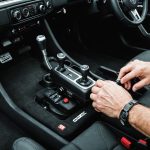Understanding UK Regulations for Car Audio Systems
Being aware of UK car audio system regulations is crucial for anyone looking to upgrade their vehicle’s sound system. The legal requirements for car audio installations are specific and aim to maintain safety and minimise distractions for drivers. This involves adhering to standards that dictate the installation and functionality of audio equipment within vehicles.
In the UK, regulations impact your choice of equipment significantly. The Department for Transport and the Vehicle Certification Agency provide guidelines that help ensure selected audio systems do not interfere with driver concentration or impede vehicle operations. For instance, ensuring correct wiring and placement of speakers can prevent potential hazards. Additionally, sound levels are monitored to prevent excessive noise, which can be distracting and lead to penalties.
Also read : Ultimate Guide: Effective Strategies to Protect Your UK Car Upholstery from Sun Damage
Non-compliance with UK standards for car audio systems can result in various consequences. Drivers might face fines or their vehicle failing inspection. In worst-case scenarios, improperly installed systems could lead to accidents due to distractions or system malfunction. Therefore, it’s crucial to opt for equipment that meets regulatory standards and ensure professional installation to avoid potential legal and safety issues.
Understanding these guidelines is beneficial for making informed decisions about your car audio system and adhering to the significant focus on driver safety and vehicle compliance within the UK.
In parallel : Comparing MOT Standards: Key Differences Between Electric Vehicles and Diesel Cars in the UK
Essential Tools for Installation
Setting up a high-powered audio system in your vehicle requires the right tools, ensuring both efficiency and safety. To begin, you need to gather a fundamental toolkit tailored for car audio installation. Essential items include:
- Wire cutters and strippers: Crucial for precise adjustments and connecting wires without damaging them.
- Screwdrivers: A set comprising Phillips, flathead, and hex types assists in dismantling and assembling components.
- Multimeter: This tool is indispensable for verifying electrical connections and preventing potential shorts.
- Crimping tool: Ensures secure terminals and connections for cables.
- Heat gun or soldering iron: Key for making durable electrical connections.
When selecting these tools for car audio installation, prioritize quality over price. Investing in durable, high-quality tools not only guarantees a safe installation but also extends the longevity of your tools. Equally important is maintaining a well-organized workspace, allowing you to systematically approach the installation process.
A spacious, clutter-free area reduces risks of accidents and enhances focus. Consistent organisation means your tools are easily accessible and safeguarded against wear. Establishing this groundwork not only streamlines the installation process but also promotes a professional and efficient work ethos.
Step-by-Step Installation Process
Embarking on a car audio installation project can be an exciting endeavour. This guide offers detailed steps and insights to ensure a seamless experience.
Preparing Your Vehicle
To begin, it’s crucial to disconnect the car battery. This step prevents electrical shorts and protects both the installer and the vehicle’s electronics. Understanding the vehicle’s wiring layout aids in identifying existing connections and pathways, which streamlines the process. Ensure you gather all necessary components beforehand, including wiring harnesses, mounting kits, and any adapters specific to your car model.
Mounting the Audio Equipment
Securing audio components properly ensures they remain stable, even when driving over rough terrain. Speaker placement is key; consider sound acoustics and accessibility, avoiding direct exposure to sunlight where possible. Additionally, consider heat dissipation: equipment should have adequate airflow around them to prevent overheating, which can damage sensitive electronic parts.
Connecting Wiring and Power Supply
Begin with an overview of wiring color codes; this foundational knowledge improves connection accuracy. For example, red often signifies power. Following this, a step-by-step approach to connecting power ensures each component receives the correct voltage. Lastly, ensure the system has a proper grounding point; this is vital as it enhances both safety and performance by reducing risk of shorts or interference.
Safety Precautions During Installation
When embarking on a car audio installation journey, prioritising safety tips is paramount. Whether you’re a seasoned professional or a DIY enthusiast, personal protective equipment (PPE) serves as your first line of defence. Safety goggles and gloves are essentials, guarding against inadvertent electrical hazards and sharp components that might pose a threat during the installation process.
Avoiding electrical hazards is crucial. Before commencing, ensure the vehicle’s power is disconnected to prevent unwarranted electrical shocks when working on wiring or other electrical components. This simple step mitigates risks and enhances your overall safety.
Equally significant is the need for proper ventilation. Car audio installations often involve using chemicals or soldering tools generating fumes. A well-ventilated environment mitigates the inhalation of hazardous particles, ensuring your health isn’t compromised during the installation.
Adopt these safety tips diligently:
- Ensure all connections are insulated to prevent short circuits.
- Work in a well-lit area to better spot potential hazards.
- Always keep a charged fire extinguisher nearby for emergencies.
By integrating these safety precautions, you not only secure your health and well-being but also foster an environment conducive to a successful car audio installation.
Troubleshooting Common Installation Issues
When it comes to troubleshooting car audio systems, power issues are often a primary concern. A common problem is when the audio system refuses to turn on, which can usually be traced to a faulty connection or insufficient power supply. Start by ensuring all wires are securely connected, particularly the ground wire, as a loose connection can hinder performance. Additionally, verifying that the voltage reaching the amplifier aligns with its requirements can resolve many power-related problems.
Another frequent issue is poor sound quality, characterized by distortion or unclear audio. This could be due to improper speaker placement, which affects audio dynamics. Ensuring speakers are properly mounted and facing the right direction optimizes sound delivery. Sometimes, the audio source might simply be incompatible or of low quality – upgrading to a better audio source or adjusting the equalizer settings might help.
Interference is another nuisance that can affect both sound quality and system performance. This usually manifests as a buzzing noise. To check for interference, inspect your wiring for damage or exposure to power cables which can introduce unwanted signals. Using shielded cables can prevent this problem. Equip your system with high-quality components and thoroughly examine connections to mitigate interference implications.
Impact on Car Warranty and Insurance
Understanding the implications of modifying a car’s audio system is essential, especially concerning warranty and insurance aspects. When considering car audio changes, scrutinize the warranty terms. Often, car manufacturers include clauses that modifications could potentially void parts of your warranty. For example, if installing a high-powered audio system causes electrical issues, you may be liable for repairs. It’s vital to read the fine print and consult your dealer.
When it comes to insurance, informing your provider about audio system modifications is critical. Some insurers might consider modifications, especially costly ones, a liability risk or an attractive target for theft. These implications can affect your premiums. Therefore, it’s crucial to detail the changes accurately and assess potential new costs with your insurance provider.
While installing a high-powered audio system often enhances your driving experience and can be exciting, it’s not without risks. Electrical failures and potential theft are notable concerns. Yet, there are benefits, too. A high-quality audio setup can increase your car’s value and customize the listening experience. Balancing these considerations, with an eye on the warranty and insurance implications, allows you to make an informed decision about the modifications.
Recommended Audio Equipment
Finding the best car audio equipment boils down to choosing devices suited to your vehicle’s needs and your preferences. When considering high-powered systems, reliable brands such as Pioneer, Alpine, and JBL are often highlighted by users for their robust performance and durability.
Reliable Brands and Models
Pioneer remains a top contender in the market, especially praised for its advanced technology and versatility. Alpine is preferred by those seeking clarity and precision in sound, making it ideal for music enthusiasts. JBL, on the other hand, is renowned for its powerful bass and overall audio quality, frequently recommended by experts and users alike for dynamic audio experiences.
Choosing Components
It’s crucial to consider the type of vehicle when selecting components. Sedans might benefit from compact subwoofers and integrated amplifiers, while larger SUVs or trucks might require components with higher power handling and wattage capabilities. Tailoring your system based on your vehicle ensures optimal audio output and space utilization.
User Recommendations
User reviews consistently highlight the importance of compatibility and ease of installation. Opt for components that are not only high-performing but also offer seamless integration with your vehicle’s existing systems. For the best results, consult with professional installers who can provide insights on achieving top-notch audio control and customisation.
Further Resources and Visual Aids
For those eager to enhance their understanding of car audio installation, accessing the right resources can be immensely helpful. Instructional videos are standout tools for visual learners, offering a step-by-step approach to installation procedures. Platforms such as YouTube host countless channels dedicated to this topic, providing clear demonstrations that can boost confidence and clarify complex steps.
Engaging with forums and communities can benefit both beginners and seasoned car audio enthusiasts. These communities serve as a repository of shared experiences, where one can seek advice or exchange tips. Websites such as DIYMobileAudio provide lively discussions and valuable insights, fostering an environment for enthusiasts to grow their knowledge collectively.
Visual aids, like infographics, are an excellent way to quickly digest crucial installation steps and safety tips. These concise visual summaries guide users through each phase of the process, ensuring that no important detail is overlooked. Infographics can also serve as a quick reference when working on an installation, minimizing potential risks by emphasizing safety tips.
By leveraging these resources, anyone can enhance their car audio installation skills, fostering a deeper understanding and appreciation of the intricacies involved in crafting the perfect sound experience.











